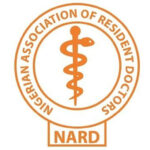
In an interview with The News Agency of Nigeria in Awka on Friday, Ugwuanyi gave the assurance that infertility is curable once it is followed up medically.
He stressed that infertility occurs in a couple if they are unable to achieve pregnancy after one year of regular and unprotected sexual exposure at least 3 times a week.
He rolled out some medical terms like fecundability, the probability of conception in a month or in a menstrual cycle, which varies across and within age groups for both women and men.
The monthly probability of conception is at most 0.15–0.25 among newlyweds and this declines with increasing age and duration of marriage. It is this low because fertilisation can occur only for about two days around the time of ovulation in the middle of the menstrual cycle.
He further said pregnancy rates vary per age revealing that women under 30 years have a 70-75 per cent chance, Women 35-35 60 percent while Women aged 36 years and above have a 50 per cent chance.
He further said that motivated couples that comply with therapeutic guidelines can expect a 50 to 60 percent chance of conception.
Ugwuanyi said that infertility can be primary or secondary and described primary infertility as a subunit of infertility in which the woman has never been pregnant while secondary infertility is a subset in which the woman has previously been pregnant irrespective of the outcome.
He also said that either of the two subsets can be further classified as unexplained infertility which describes a situation where the couple has no discernable cause of infertility after a comprehensive investigation of tubal assessment, ovulation assessment, seminal fluid analysis, amongst others after two years of regular and unprotected sexual intercourse.
According to him, “In Nigeria, 0.2 per cent of every couple has difficulty with conception. 30-40 per cent due to male factor 30-40 per cent due to female factor, 10-20 per cent due to both male and female factors 5-10 per cent is unexplained.”
He said that infertility in Nigeria is largely secondary and mainly due to infections such as sexually transmitted infections, post-abortal sepsis, and puerperal sepsis, indicating that tubal damage accounts for more than half of all female causes of secondary infertility.
Ugwuanyi said that age is another important etiological factor of infertility as 10 percent of women under 30 years will present with infertility, and ditto for 15 per cent of women between 30 and 35 years will present with infertility.
He further stated that 30 percent of women between 35-40 years will present with infertility, and 60 percent of women above 40 years will also present with infertility.
Ugwuanyi said that reduction in age-related fertility is predominantly the result of the decline in oocyte quality, enhanced follicular atresia, and an increased rate of chromosomal abnormalities in fertilized oocytes and resulting embryos.
He explained that socio-economic factors that have been implicated in the propagation of infertility are poverty, smoking, alcohol intake, and substance abuse.
According to him, ovarian issues which are problems with ovulation, cervical factors, and endometriosis are issues with females while the cause of male infertility were described as endocrine which is thyroid disorder among others.
He said that coital disorder erectile dysfunction, ejaculatory dysfunction, abnormal spermatogenesis, mumps orchitis, genetic, chemical, radiation, drugs, heat vascular varicocele, testicular torsion, and immunologic Idiopathic are all male issues.
Ugwuanyi said that there is hope in the management of infertility through evaluation and diagnosis of infertility in the female by checks on female menstrual history, gynaecological and contraceptive history, past obstetrics history, and past medical and surgical history.
He also stated that in the male management, their history of genital tract infection, previous genital tract operation, past or present medical condition such as diabetes mellitus or renal disease, drug use, antihypertensive, Immunosuppressive, nitrofurantoin, anabolic steroids, nicotine, alcohol, must be ascertained.
The medical expert said that behavioral and occupational hazards such as soldiers on special duties, long-distance drivers, and men who have multiple sexual partners all parts of need to be checked.
He said that there is the need for an initial clinical assessment which is the history and examination of the couple, the general examination such as their nutritional status, general well-being, height, weight, male-type baldness, and finger clubbing.
Ugwuanyi said that breast checks for abnormal nipple discharge, abdominal exams, and pelvic exam Investigations are geared towards tubal assessment, ovulation assessment, and male fertility status by seminal fluid analysis.
He said that after all the basics are done, there is hope for treatment though that is dependent on the causes detected which can be medical or surgical.
However, he said the hope of the presence of quality medical techniques would bridge the infertility challenges.
He said that cases that are not amenable to medical or surgical treatment options would have assisted conception technique which includes intrauterine insemination and surrogacy.
He said also that the choice of adoption and acceptance of childlessness is also hope available to such couples instead of living in pain.
Ugwuanyi said that quality counseling and psychological support play vital roles in the management of infertility in a couple.





